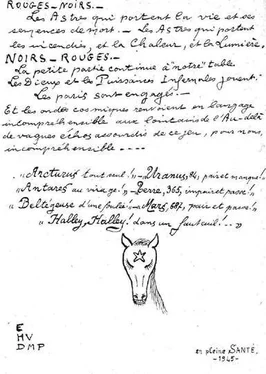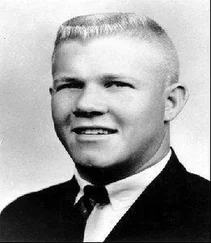As for the bodies, Petiot said that he could not just load them into the truck and haul them away, as he claimed to have done to dispose of traitors earlier. The vehicle, at that moment, needed repairs, and although he was a decent mechanic who could have fixed the job himself, he was reluctant to attract undue attention. This was why he had ordered four hundred kilos of quicklime from Auxerre.
But once he obtained the material, he found the method slow and only partially helpful in disposing of the bodies. Fearing a Gestapo raid at any moment, two of his colleagues suggested that they burn the bodies. The colleagues, of course, were not identified.
To speed the process, the men hacked the cadavers into bits and fed the boiler, which was, Petiot said, the first time it had been used since he bought the building. He did not know anything about the bodies lacking hair, eyebrows, and facial masks. He suspected that it was either a lie or an effect of the lime. The hair might also have fallen out when they tried to move the corpses.
BEING a patriot and a Resistance fighter, however, was not Petiot’s only possible defense. In the hands of his attorney, René Floriot, there was another strategy that prosecutors would have to consider.
At the end of the First World War, Petiot was known to have been incarcerated in a number of mental institutions. He had been discharged from the army with 100 percent mental incapacity, though this had later been reduced to 50 percent. He had received disability payments from the state, and continued to do so during the time he was elected mayor, built his medical practice, and even during the period when he stood accused of turning his property on rue Le Sueur into a slaughterhouse.
What’s more, Petiot’s stays in asylums had not stopped immediately after the First World War. As late as 1936, he had again been interned. The circumstances would be relevant should Petiot or his lawyer plead insanity, which, according to Article 64 of the Penal Code, could make him not legally responsible for his actions.
On April 4, 1936, Petiot, then a thirty-nine-year-old doctor with a thriving Parisian medical practice, had been browsing among a display of books outside the Joseph Gibert Bookshop at 26 Boulevard Saint-Michel. About twelve thirty p.m., as he turned and walked away, a store employee, René Cotteret, caught up with him and pointed to a book under the doctor’s arm. It was an old, worn copy of a treatise on electricity and mechanics, Etienne Pacoret’s Aide-mémoire formulaire de l’électricité, de la mecanique et de l’électro-mécanique .
Petiot, appearing surprised, claimed that he had not realized he had taken the book. He showed his identification papers, as requested, and offered to pay the full price of twenty-five francs. The man refused. He took the doctor by the arm and proceeded to escort him to the police station. Petiot lost his temper. According to the police report, he seized the employee by the throat, began to strangle him, and threatened to “bash his face in.” Moments later, as Cotteret fell to the ground, Petiot ran away in the direction of the Odéon métro station.
Later that day, when an officer telephoned his apartment, a man answered and said that Petiot was not at home and had been out of town for several weeks. When two policemen knocked on his door, however, Petiot calmly opened it and received the summons for questioning at the St. Michel police station on April 6. On that date, Petiot arrived one hour late. His eyes were red, his face was puffed, and it appeared that he had been crying. He looked confused. When the officer began to ask about the shoplifting incident, Petiot handed him a letter that he said would explain everything.
According to this document, Petiot had been exhausted and consumed by his latest inventions, including work on a pump to massage the intestines and cure chronic constipation, as well as a perpetual-motion machine that he claimed to have nearly perfected. He had been so absorbed in his inventions that he had not realized that he still held the book when he walked away from the shop. He had never planned to buy the book, let alone steal it. He already knew its contents.
Petiot disputed the assault charge. As for his refusal to follow Cotteret to the police station, he reminded them that he had committed no crime and claimed that his family was waiting for him and he was already late when he stopped at the bookstore. He had cooperated with the detective, he emphasized, even giving his name: “If I hadn’t given it, you never would have found me.”
Surprised by the physician’s behavior, both at the bookstore and at the station, the police commissaire ordered a psychiatric examination. During the session, held at St. Antoine Hospital, the performing psychiatrist, Dr. Michel Ceillier, thought Petiot seemed nervous, depressed, and highly unstable. He struggled to answer basic questions and could not state the title of his medical thesis. He “wept convulsively” and, in answering questions, spoke incoherently, except when he discussed his inventions, which Ceillier believed were pure imagination.
Petiot appeared to suffer from “mental debility,” including “psychic disturbance, fits of depression, and delirium of invention.” He showed a “deep distate for everything, especially life.” He was, in short, given his profession as physician, “dangerous to himself and others”—the criteria used for placing someone in a mental institution (Law of 1838). So, on the basis of this report, dated July 22, 1936, Petiot was not held responsible for shoplifting and assault. The psychiatrist recommended that Petiot be interned in a mental hospital, forcibly if necessary.
Typically, in these circumstances, a patient would be institutionalized in a state asylum, but Petiot was granted a private hospital, as his wife had requested on his behalf: the Maison de Santé d’Ivry, just outside Paris. The head psychiatrist, Dr. Achille Delmas, supervised the cure himself. Delmas had a reputation for being very lenient and client-friendly—he would also care for surrealist poet Antonin Artaud and James Joyce’s daughter, Lucia, who came to the institution for schizophrenia during Petiot’s stay. The physician arrived on August 1, 1936.
As Petiot’s dossier, number 363 831, revealed, Dr. Delmas diagnosed the new patient as “cyclothymic,” that is, suffering from a mild manic-depressive psychosis. He noted that Petiot alternated between depression and hyperactive excitation. In depression, he experienced anxiety, insomnia, and taedium vitae , with an overwhelming need “to justify his past acts,” and in excitement, a tendency to overwork, “attempting a variety of simultaneous tasks, inventive spirit, intellectual exaltation, and excessive scientific preoccupations.”
Not long after he entered the sanatorium, thereby removing the criminal charge, Petiot started petitioning for his release. Eighteen days after his admission, Dr. Joseph Rogues de Fursac described Petiot as “calm, lucid, and non-delirious.” Whatever mental troubles had ailed him were no longer present. On August 25, 1936, Delmas supported this diagnosis, pronouncing Petiot cured. The patient was, he wrote, in “a state of mental equilibrium that would permit one to conceive of lifting his internment and facilitating his imminent discharge.” No immediate action was taken. Marcel and Georgette Petiot began writing letters to officials asking for support for his release.
“I am absolutely sane in mind,” Dr. Petiot wrote on August 19, 1936, to the procureur de la république “I have a very honorable professional past and I enjoy the esteem of everyone.”
In the end, the court chose a panel of three distinguished psychiatrists to examine the case and issue a recommendation: Dr. Georges Paul Génil Perrin, the author of The Prevention and Cure of Nervous and Mental Disorders , who was joined by Drs. Paul-Marie Maxime Laignel-Lavastine and Henri Claude, author of Medico-Legal Psychiatry . Petiot did not like the choice at all. The first doctor, he said, was crazy; the second was just “a couch man” who, he implied, took liberties with his female patients, and the third had been plucked out of obscurity. The committee finished its examination of Petiot and submitted its findings on December 19, 1936.
Читать дальше












